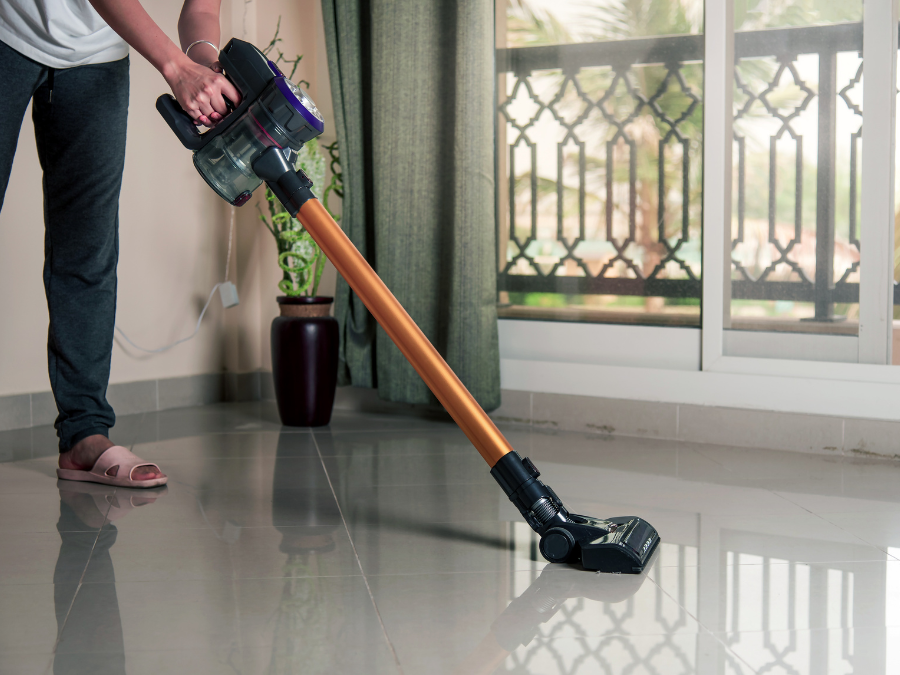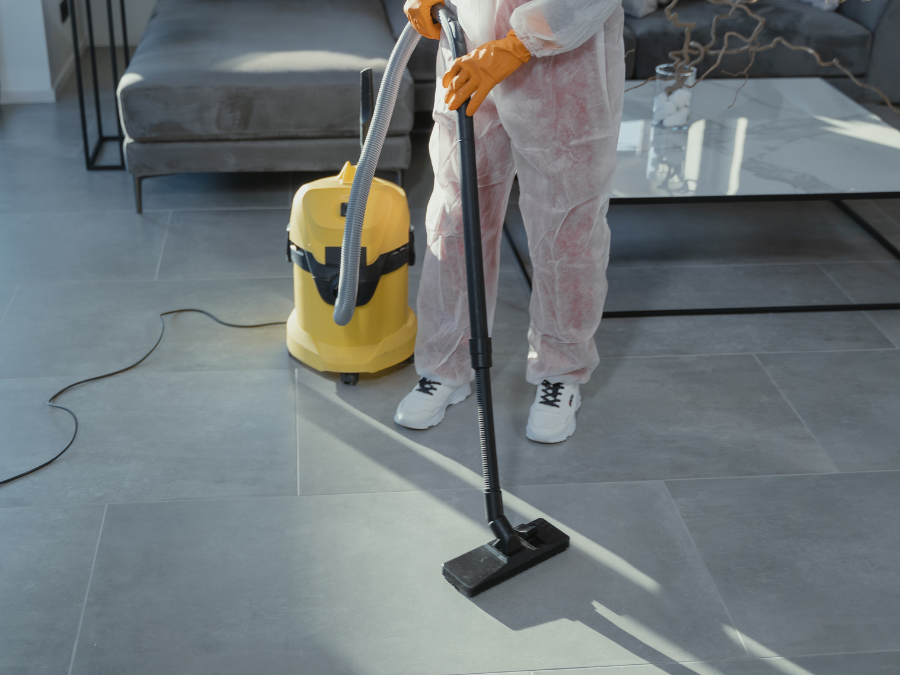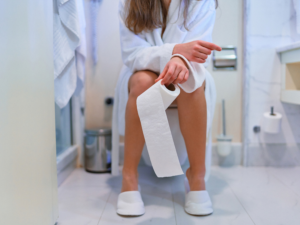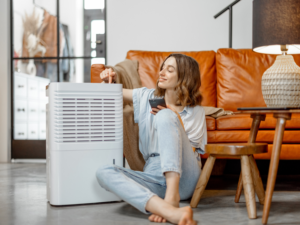For allergy sufferers, dealing with dust mites and household allergens can feel like an endless battle. Dust mites, pet dander, and fine particles are common triggers for symptoms like nasal congestion, runny nose, and asthma.
The quick answer? A vacuum with a true HEPA filtration system and strong suction power is your best friend in fighting dust mites.
Here’s a complete guide to choosing the best vacuum cleaner for dust mite allergies.
Table of Contents
Disclaimers: This article is for informational purposes only and does not constitute medical or professional advice. Always consult a qualified healthcare provider for personalized recommendations regarding allergies or respiratory concerns.
Why Are Dust Mite Allergies Such a Problem?

Dust mites are invisible to the naked eye but are a major culprit in triggering allergies.
They thrive in humid environments and love to settle into upholstered furniture and bedding.
Dust mites feed on dead skin cells, which means they’re everywhere humans and pets are active.
For allergy sufferers, the allergens they leave behind can wreak havoc on the immune system, causing runny noses, nasal congestion, and even asthma symptoms.
What Are Dust Mite Allergens?

Dust mite allergens are microscopic particles, like droppings and shed skin, that trigger allergic reactions.
These particles float into the air and settle on furniture, floors, and bedding. The best way to combat them is by reducing their presence with targeted cleaning.
How Do Dust Mites Impact Your Home?

Humid environments make it easy for dust mites to reproduce and spread.
They’re particularly attracted to places like mattresses, carpets, and upholstered furniture.
This is why vacuuming and other measures like washing bedding in hot water are essential.
Quick Solution to Dust Mite Allergies
Investing in a vacuum cleaner designed to handle dust mite allergens is a good idea.
A high-quality vacuum not only traps allergens but also improves your indoor air quality.
Best Vacuums for Dust Mite Allergies
After analyzing different models, here are some of the top picks.
Dyson is a leader in allergy vacuums, offering powerful suction and HEPA filtration systems.
I’ve personally used Dyson cordless vacuums for the past 10 years and recently upgraded to the V15 model. It’s a complete game changer.
One of its standout features is the green detecting light, which makes even the smallest dust particles visible.
This has been a huge advantage, as I can now easily spot and remove pet hair, dust, and other tiny allergens around my home.
While there may be more powerful vacuum models on the market, this little green light makes a significant difference in allergen control.
Dyson vacuums also feature advanced cyclonic technology that prevents fine dust particles from escaping back into the air, making them excellent for hard floors and carpets alike.
Miele vacuums are renowned for their advanced HEPA filters and durable design.
They work well on hardwood floors, high-pile carpets, and even upholstered furniture.
Miele’s sealed system design ensures that allergens stay trapped, making it an ideal choice for allergy sufferers.
Unlike the Dyson V15, which highlights dust particles with its green detecting light, Miele vacuums rely on their superior filtration and suction power to deeply clean surfaces.
While the V15 excels in visibility, Miele’s bagged vacuum system ensures that dust and allergens remain securely contained during disposal, reducing allergen exposure when emptying the bin.
For users who prioritize deep-cleaning efficiency over visual detection of dust, Miele remains a strong contender.
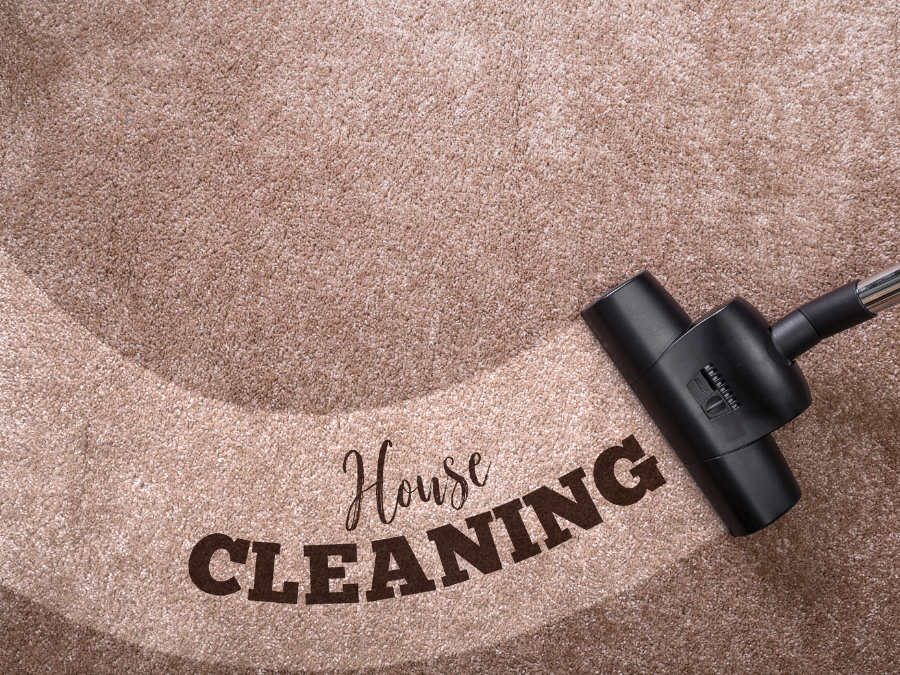
This handheld vacuum is specially designed for dust mites and bedding. It’s compact and great for spot-cleaning areas prone to allergens.
The Ultramite uses UV-C light to neutralize dust mites, providing an extra layer of protection for your home.
It’s particularly effective for cleaning bed mattresses, upholstered furniture, and couches where dust mites tend to accumulate.
The combination of UV-C light and strong suction ensures deep cleaning, helping allergy sufferers reduce their exposure to dust mite allergens in commonly used spaces.
Shark’s upright models provide strong suction and a HEPA filtration system, making them great for pet hair and high-pile carpets.
Their Lift-Away Functionality allows for easy cleaning under furniture and on upholstery.
The Anti-Allergen Complete Seal Technology, paired with a HEPA filter, traps dust and allergens inside.
With Swivel Steering for maneuverability and Brushroll Shutoff to transition between carpets and hard floors, these vacuums offer versatility.
They also include a Large-Capacity Dust Cup for longer cleaning sessions. Accessories like the Upholstery Tool and Crevice Tool make it easier to clean every corner of your home.
5. Robot Vacuums for Daily Maintenance

Robot vacuums, like the iRobot Roomba or Roborock, can complement traditional vacuums by maintaining clean floors daily.
While they may lack the advanced filtration of upright models, they’re effective for picking up surface dust and pet dander in between deep cleaning sessions.
What Features Make a Vacuum Effective Against Dust Mites?
Not all vacuums are created equal when it comes to handling household allergens. Here’s what you should look for.
HEPA Filtration System
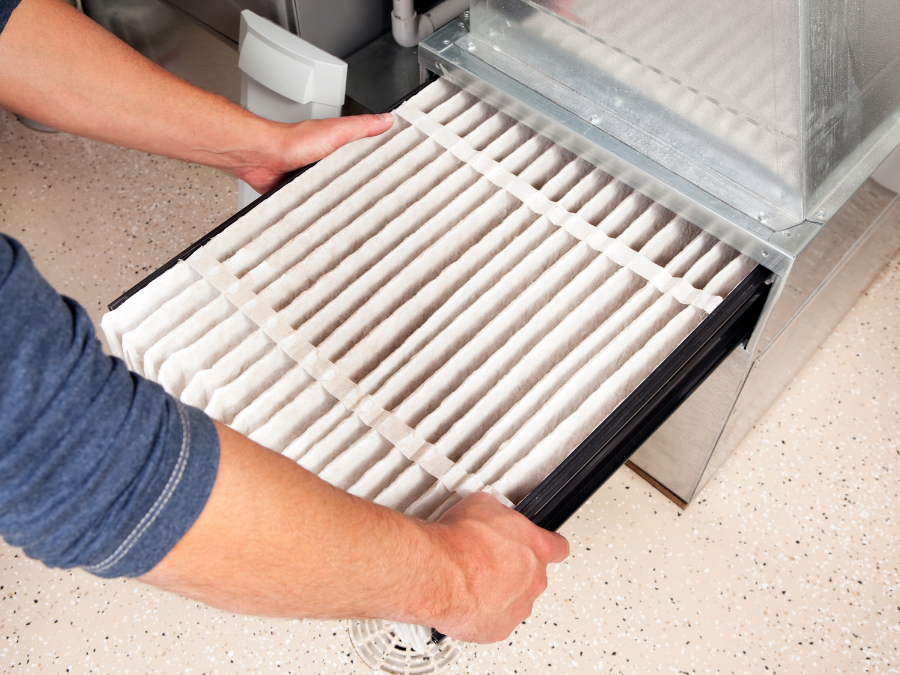
A HEPA filtration system (high-efficiency particulate air filter) is the gold standard. It traps small particles like dust mite allergens, pet dander, and fine particles, leaving cleaner air behind.
Advanced HEPA and true HEPA filters are particularly effective for allergy sufferers.
Strong Suction Power
Whether you’re dealing with high-pile carpet, hardwood floors, or upholstered furniture, a vacuum with strong suction power is essential.
It ensures that dust particles and pet hair are effectively removed from your home.
Bagged vs. Bagless Models
Bagged vacuum cleaners use double-layered microfilter bags to trap allergens better.
However, bagless vacuums are easier to empty and often more convenient for daily use. Choose based on what fits your cleaning habits.
Additional Features to Consider
Look for vacuums with specialized attachments, such as crevice tools for corners and upholstery brushes for furniture.
Some models also feature anti-tangle technology to prevent pet hair from clogging the brush rolls.
Other useful features include LED headlights to spot hidden dust and self-cleaning capabilities to reduce maintenance time.
How to Maximize Your Efforts Against Dust Mites
Vacuuming alone won’t solve the problem completely. Here are additional tips to keep allergens at bay:
Wash Bedding Regularly
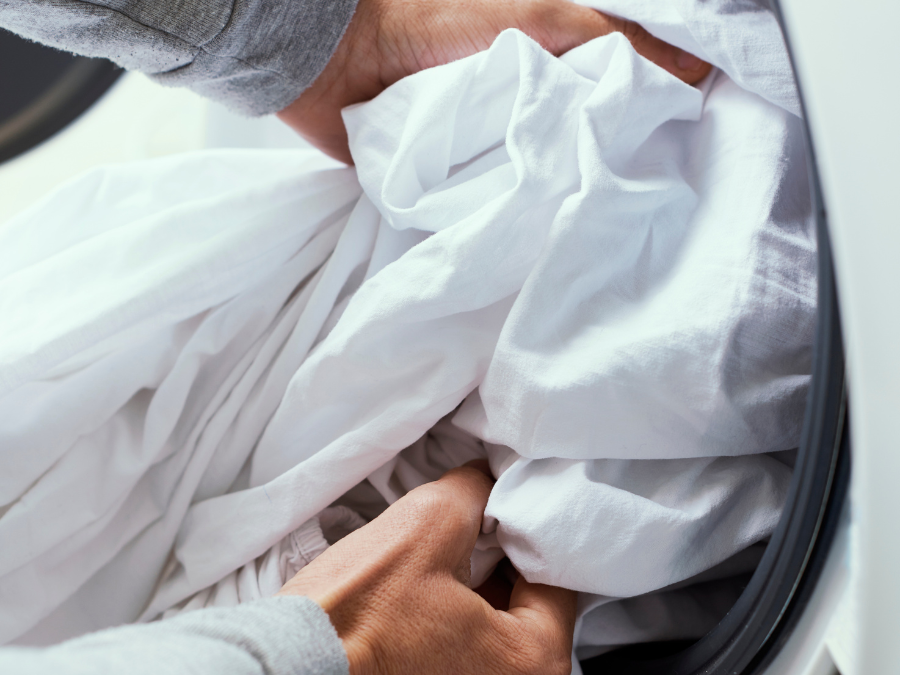
Use hot water to wash bedding and kill dust mites. This is one of the most effective ways to reduce allergens in your bedroom.
Maintain Relative Humidity
Dust mites thrive in humid environments. Using a dehumidifier or air conditioner to lower humidity can significantly reduce their population. Aim for a relative humidity level below 50% for the best results.
Check out our article on Does a Dehumidifier Help with Allergies? for quick and effective allergy relief!
Use Air Purifiers
Air purifiers with AllerTech filters trap airborne particles, ensuring cleaner indoor air. Consider placing air purifiers in bedrooms and living spaces for maximum effectiveness.
Don’t miss our in-depth guide on Air Purifier vs. Humidifier: Which One is Best for Allergies?
Click here to discover which is right for you!
Clean Upholstered Furniture
Vacuum couches, chairs, and other upholstered items regularly. This helps remove settled dust and pet dander. Consider using a steam cleaner periodically to eliminate deep-seated dust mites.
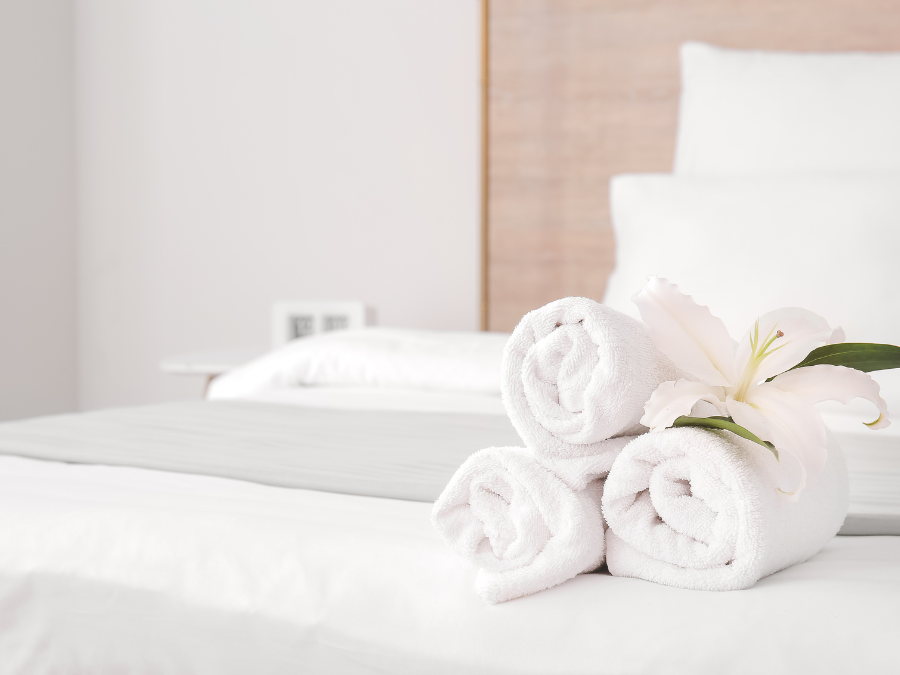
Consider Protective Covers
Covering mattresses and pillows with allergen-proof covers prevents dust mites from settling in. These covers create a barrier, ensuring better protection.
Regularly Replace Vacuum Filters
Even the best vacuum cleaner won’t perform well if its filters are clogged. Replace or clean filters regularly to ensure optimal performance.
Common Questions About Dust Mite Allergies
Can a Vacuum Really Help With Dust Mite Allergies?
Yes! Using a HEPA vacuum is one of the best ways to trap allergens like dust mite droppings and fine particles.
It’s an effective first step for managing allergy symptoms.
Do Robot Vacuums Work Against Dust Mites?
Robot vacuums are a convenient option for maintaining clean floors daily.
However, they may lack the suction power and advanced filtration of traditional vacuums.
How Often Should I Vacuum?
For allergy sufferers, vacuuming at least twice a week is recommended. Focus on high-traffic areas, carpets, and upholstered furniture.
What Other Household Items Harbor Dust Mites?
Besides carpets and bedding, dust mites can thrive on curtains, soft toys, and even car seats. Consider washing or vacuuming these areas as part of your cleaning routine.
Are Bagged Vacuums Better for Allergies?
Yes, bagged vacuums are generally better for allergy sufferers. They seal in allergens more effectively during disposal, reducing the risk of exposure.
Advanced Tips for Managing Allergies
Choose the Right Vacuum Attachments
Many vacuum cleaners come with specialized attachments for hard-to-reach areas. Use these to clean corners, under furniture, and narrow spaces where dust accumulates.
Opt for Washable HEPA Filters
Some vacuums offer washable HEPA filters, which are cost-effective and sustainable for long-term use. This makes maintaining your vacuum cleaner easier.
Vacuum in a Systematic Pattern
When vacuuming, move in a systematic pattern to ensure thorough cleaning. Overlapping strokes will prevent missed spots and help remove more allergens.
Explore Seasonal Discounts
Look for discounts or special offers from major vacuum brands. Popular models like Dyson, Miele, and Shark often feature seasonal deals or free shipping options.
Final Thoughts: Creating an Allergy-Free Home
Fighting dust mite allergies doesn’t have to feel like a losing battle. Start with the right vacuum cleaner—whether it’s a Dyson, Miele, or Shark—with HEPA filtration and strong suction power.
Combine vacuuming with other strategies like washing bedding in hot water, reducing humidity, and using air purifiers.
With consistent effort, the right tools, and a proactive approach, you can create a healthier, allergen-free living space for you and your family.

